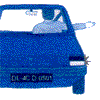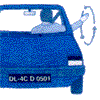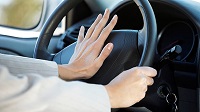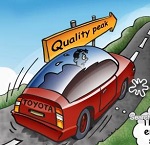Road Safety Rules in India | Rules of the road | what is the traffic rules :
Road safety is of prime importance as road accidents are among the biggest causes of deaths. With so much traffic on the country’s roads, it is importance for everyone to have traffic awareness and understand and respect all the road safety rules in India to maintain law and order.
what is traffic rules in india
1 General Road Rules
KEEP LEFT on a two-way road to allow traffic from the opposite direction to pass on your right and on a one-way road to allow vehicles behind you to overtake from your right.
WHEN TURNING LEFT, keep to the left side of the road you are leaving as well as the one you are entering. When turning right, move to the centre of the road you are leaving and arrive near the left side of road you are entering.
SLOW DOWN at road junctions, intersections, pedestrian crossings and road corners and wait until you are sure of a clear passage ahead. if you are entering a main road where traffic is not being regulated, give way to vehicles passing on your right.

HAND SIGNALS are necessary at certain times. When slowing down, extend your right arm palm down and swing it up and down; when stopping, raise your forearm vertically outside the vehicle; when turning right or changing lane to the right hand side, extend your right arm straight out, palm to the front; when turning left or changing lane to the left hand side, extend your right arm and rotate it in an anti-clockwise direction.
To allow the vehicle behind you to overtake, swing your right arm backward and forward in a semi circular motion.

DIRECTION INDICATORS Better use directions indicstors instead of hands singlals and both in case of any emergancy.
WEARING A HELMET FOR TWO WHEELER DRIVERS is a statutory requirement. The helmet must conform to the ISI standards and should bear the ISI mark. Helmet works as a shield for your head in case of a mishap. It is designed for your individual safety and not as a cover to avoid legal prosecution. For complete safety tie the strap properly otherwise the helmet may slip from your head in case of an accident head injury. (Turban wearing Sikhs are exempted from using a helmet).
NOT PARK at or near a road crossing or on top of a hill or on a footpath; too near a traffic light or pedestrian crossing; on a main road or a road with heavy traffic; in front of or opposite another parked vehicle to cause obstruction; on roads that have a white line; near a bus- stop, school or hospital entrance; right next to a traffic sign thereby blocking it for others; at the entrance of a building; near a fire hydrant thereby blocking access to it; where parking is specifically prohibited.
THE REGISTRATION MARK of the vehicle should be clear, legible and visible at all times. Do not load the motor vehicle so as to obstruct the tail lights or any other lights or marks required on the vehicle for its safety.
DO NOT DRIVE on a one way road except in the direction permitted. Reversing into a one way street in the wrong direction, is also prohibited.
DO NOT CROSS THE YELLOW LINE dividing the road even while overtaking. On roads with defined lanes use appropriate indicator signal before changing lanes.
DO NOT CROSS THE STOP LINE painted on the road when you stop at a road junction or intersection or a pedestrian crossing. In no case should your stationary vehicle project,beyond this line.
TOWING IS PERMITTED only for mechanically disabled or incompletely assembled motor vehicles, registered trailers and side cars. Vehicles other than these may be towed for delivery to the nearest garage or petrol pump in case of untimely breakdown.

USE THE HORN only when essential and do not use it in a silence zone. Do not fit loud, multi-toned or harsh and shrill sounding horns or alarms in your vehicle. Vehicles with altered silencers are also prohibited on the road.
DIRECTIONS GIVEN TO DRIVERS either through police officers regulating traffic or through road signs or traffic signals should be followed at all times. Violation of these is an offense.
MAINTAIN AN ADEQUATE DISTANCE from the vehicle ahead of you to avoid collision if that vehicle suddenly slows down or stops. A chart to guide you on minimum braking time required at different speeds is given on page 33 for your information.
DO NOT BRAKE SUDDENLY except for safety reasons.

ON MOUNTAINS AND STEEP ROADS the vehicle driving uphill must be given the right of way by vehicles coming downhill. If the road is not sufficiently wide, pull your vehicle to a stop on the side of the road and allow the driver going uphill to proceed first.
WHEN ROAD REPAIR WORK is going on, slow down and drive at a speed not exceeding twenty five kilometers per hour.
DRIVERS OF TRACTORS AND GOODS VEHICLES are prohibited from carrying passengers for hire or reward. In a tractor, the driver should not carry any other person and in a goods vehicle, he should not exceed the number of persons permitted in the driver's cabin.
DO NOT CARRY GOODS on a motor vehicle in a manner that may cause danger to any person, or load it thus that the goods extend laterally beyond the side, front or to the rear of the vehicle. Carrying of explosives, inflammable or dangerous substances by any public service vehicle is also prohibited.
CARRY ONLY ONE PILLION RIDER on your two wheeler. You must carry the rider only on the back seat. Do not allow any rider to sit or stand in front of you (not even children). It is not only illegal but often becomes dangerous because sudden braking may throw out the child or person hitting the vehicle in front. It is a violation of law to carry goods on your two wheeler as the rider may lose balance easily leading to accidents.
DO NOT DRIVE BACKWARDS longer than necessary, and do ensure that you do not cause danger or inconvenience to any other person or vehicle while doing so.
DO NOT DRIVE on the road if you are unwell or after taking medication that is likely to impair your driving abilities including tonics that may have an alcohol content in them.
FAQs
Q: Basic traffic rules in india?
A: 1. Do Not Drink and Drive
2. Keep a Safe Distance.
3. Wear your seatbelt while Driving a Car.
4. Always wear a helmet when travelling on a 2-wheeler.
5. Never use Mobile Phone while Riding.
6. Never Over Speeding.
7. Never Jumping the Red Light.
8. Never drive or ride in an intoxicated condition
9. Cross a road only on a zebra/pedestrian crossing
10. Follow all traffic rules while driving
Q: Types of traffic signs in India?
A: Traffic signs are divided into three categories: regulatory, warning, and guide.
Q: What are road safety rules?
A: Here are some basic road safety rules –
1. Understand Traffic Signals.
2. Stop, Look, And Cross the road
3. Pay Attention to vehicular movement around you
4. Don’t Run On Roads
5. Always Use Sidewalks/Footpaths
6. Use Pedestrian Crossing for walking across road
7. Never Stick Hands Outside The Vehicle
8. Never Cross Road At Bends
Q: What is the maximum penalty for speeding?
A: The penalty for speeding on Indian roads depends on the size of your vehicle. For instance, if you are driving a light motor vehicle while speeding, you would need to pay fines of up to Rs.1000.
On the other hand, for medium passenger vehicles, this fine would be up to Rs.2000.